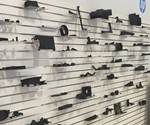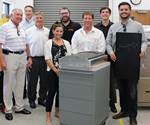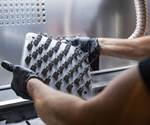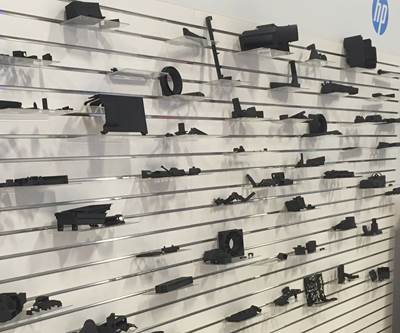Does Asia's Low-Cost Manufacturing Option Still Make Sense?
As U.S.-based companies try to stay ahead of COVID-19, global supply chains are under renewed scrutiny. Are uncertainties and delays caused by global crises worth the short-term cost savings?
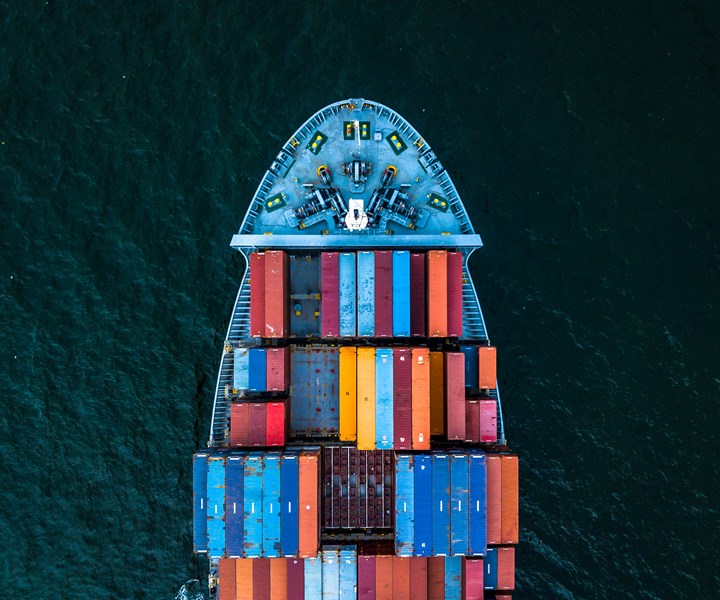
With broken supply chains resulting from the coronavirus, the opportunity for a sustainable domestic manufacturing surge has perhaps never been greater.
The downward pressure on U.S. companies to reduce costs during the past two decades has resulted in the massive off-shoring of manufacturing operations to plants in China and other countries throughout Asia, a phenomenon that has helped China attain roughly 16% of today’s world gross domestic product. For domestic companies that rely on parts produced in China, the result has been a massive supply chain risk, most dramatically seen recently as the latest coronavirus shut down most of the country.
At the same time, new iterations of industrial 3D printers are debuting at an unprecedented rate, offering a glimpse into a future of mass customization that could change the global supply chain dynamic. To discuss this as well as the potential long-term domestic manufacturing benefits that may result from the current pandemic, I talked to Randy Altschuler, CEO of Xometry, the Maryland-based online platform that connects customers and suppliers of custom manufactured parts.
Additive Manufacturing Magazine (AM): I imagine that Xometry has a unique perspective on the impact of the coronavirus on U.S. manufacturing since your company doesn’t produce parts, but rather connects companies that need parts with a global network of suppliers, including domestic suppliers located in 46 states. What impact of the pandemic are you seeing right now on both the supply and demand sides?
Randy Altschuler (RA): I would tell you that it’s an emerging situation, but the fallout from this — and I'm not talking about just the human or health fallout, which is obviously first and foremost for everybody — but the business fallout will be devastating. For these men and women, their machine shop is sort of melded into their lives. They're so dedicated to making parts for their livelihood that they're working through this.
AM: I feel like a “but” is about to happen.
RA: Well, so far from a demand perspective, we are surprisingly seeing strong demand. A lot of our industries, like aerospace, defense and robotics, those industries are less sensitive to consumer demand, at least in the short term. So demand has continued to be strong.
AM: Part of the reason why I wanted to talk to you was because of Xometry’s unique position as a matchmaker between machine shops and customers looking for manufacturing capacity. Are you literally seeing companies that already want to move manufacturing operations back to the U.S. because of the coronavirus?
RA: Yes. I mean, even yesterday there was a $50,000 order where the customer said, “You know what, we've done this in China, but everything we've got there right now is simply too far backed up because of the work shortages. We don't have confidence in it. I need to get out of this place immediately. I need do it right away.”
I also think the future is it is more distributed manufacturing. The increase usage of AM and other advanced manufacturing will also tip the scales more towards a skilled workforce and there'll be less focus on the low-wage jobs. And that will also help the United States. The trend toward mass customization will also play more of a focus on smaller manufacturers, because you won't need somebody who can make a million parts; you need somebody you can chunk out a few thousand thousand. That also plays well for U.S. manufacturing.
AM: But it also opens up a wholly different challenge: workforce.
RA: Yes. The flip side of that is we need to make sure that those manufacturers can operate. It will take all of us proudly saying that we want our children to go into manufacturing — that’s something the government needs to help with now. That's a standard we need to make a reality, now. It literally will help our lives. I think it's very interesting that if your child becomes a police officer or a firefighter or a doctor or nurse, we recognize the social good that they're doing there. I don't think you have that respect for manufacturers. But if people aren't making things, the rest of us cannot survive. Our infrastructure, our national security — all of these different things that require actual fabrication of parts. We need to trumpet that and make manufacturing a heroic profession. We need to give it recognition. And we need to excite our girls and boys to grow up and to be manufacturers.
Read Next
Overcoming Obstacles to Bring AM into the Supply Chain
A conversation with Jabil’s John Dulchinos and HP’s Stephen Nigro illustrates some of the challenges in integrating additive manufacturing into a supply chain for production parts.
Read MoreFast-Tracking the Supply Chain with 3D-Printed Tooling, Strategic Partners
Catalysis Additive Tooling is building a one-stop supply chain for production quantities ranging from one to one million. 3D-printed tooling and relationships are key.
Read MoreProtolabs Metal 3D Printing Meets Demanding Part Requirements
Rapid 2019: Protolabs’ direct metal laser sintering (DMLS) process is designed for demanding applications.
Read More

